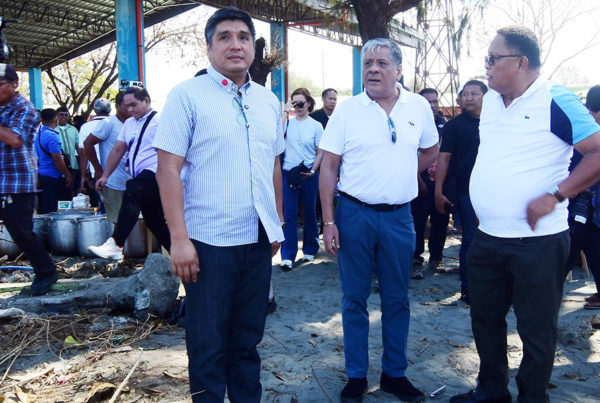Expect cases in Dagupan to 1,000 in 2-3 weeks
“THE WORST IS YET TO COME”
TWO out of ten Dagupeňos are likely to be infected with the Delta variant of COVID-19 in varying degrees of condition – from mild to fatal – in the next two weeks even as the local government continues to grapple in containing the rapid spread of the highly transmissible variant.
This was revealed by Prof. Lysander Padilla who analyzed the basic 38-day data from August 1 to September 7 posted by the Dagupan Public Information Office on its social media site, that showed that 25 percent of the city’s population are under threat of being infected, mildly or severely.
“Using the exponential rate of 1.3 percent — which is the same rate of growth as in the National Capital Region – we can expect active cases in Dagupan City to rise to 1,000 or even more in two to three weeks,” Padilla said. “The current trend of increase is not likely to stop for the next two weeks and during this time infections would likely increase even faster,” he stressed.
Meantime, a local private hospital reported that the positivity rate of persons who were administered swab or RT-PCR was at 32 percent between August 30 and September 7 which supports Padilla’s theory of “acceleration.”
It will be recalled that the city started out with 17 new cases on August 1 which climbed to 57 new cases on August 27 and increased further with 70 new cases in September 7. On the same date the city recorded 637 active cases, an all-time high.
Bonuan Gueset accounted for 14 percent of the active cases with 63 followed by Pantal with 9 percent or 61 active cases, third was Bonuan Boquig at 9 percent with 63 cases.
The top three barangays are tightly clustered which makes air-borne transmission faster. The least infected are Mamalingling, Lomboy and Bacayao Norte with one active case each.
Padilla recommends that the rate of vaccination be increased by encouraging the private sector to “come into the scene” immediately by procuring and vaccinating their own employees and private citizens who are willing to pay.
“Vaccination appears to be the only solution to slow down the spread of COVID-19 and achieve herd immunity. Through herd immunity we can hope to render the infection innocuous and live with it someday, as we do with the flu and cold which bother us seasonally. In addition to the current power of the vaccine, modifications for developing variants, such as the Delta, and other intervention such as medications when one is already infected must be developed,” he said.
Padilla stressed that he is not a big fan of lockdowns as it tends to stifle the economy but it appears to be a necessary “draconian measure” to control the rapid transmission together with strict observance of wearing face masks and face shields and physical distancing among people especially in tightly clustered neighborhoods as in the case of Lucao, Bonuan Gueset, Pantal, Bonuan Boquig and Malued.
In a survey conducted recently in all of the towns in the second and third districts of Pangasinan by a polling firm with more than twenty years of experience, 25 percent of persons interviewed in the second district said they are “ready” to take the vaccine while the rate of readiness in the third district is higher at 40 percent. It was found out that fear is the number one factor that keeps people away from vaccination centers. In the third district, only 16 percent said that they have been vaccinated while the number is 6 percent in the second district.
Professor Padilla holds a doctoral degree in Research Methods and Political Economy from the University of Southern California, Los Angeles. He earned a diploma on Economic Geography from the Kiev State University in Ukraine and another diploma on Information Technology also from the same university. He was a professor of Political Science and Sociology at UP Baguio retired and associate professor of Political Science and Sociology at UST (retired). He was also a professorial lecturer at the California State University, Fullerton in the United States. He did his Post Doctoral in Demography and Survey Methods in Humboldt University, Berlin. (Contributed by Art Valenzuela)







